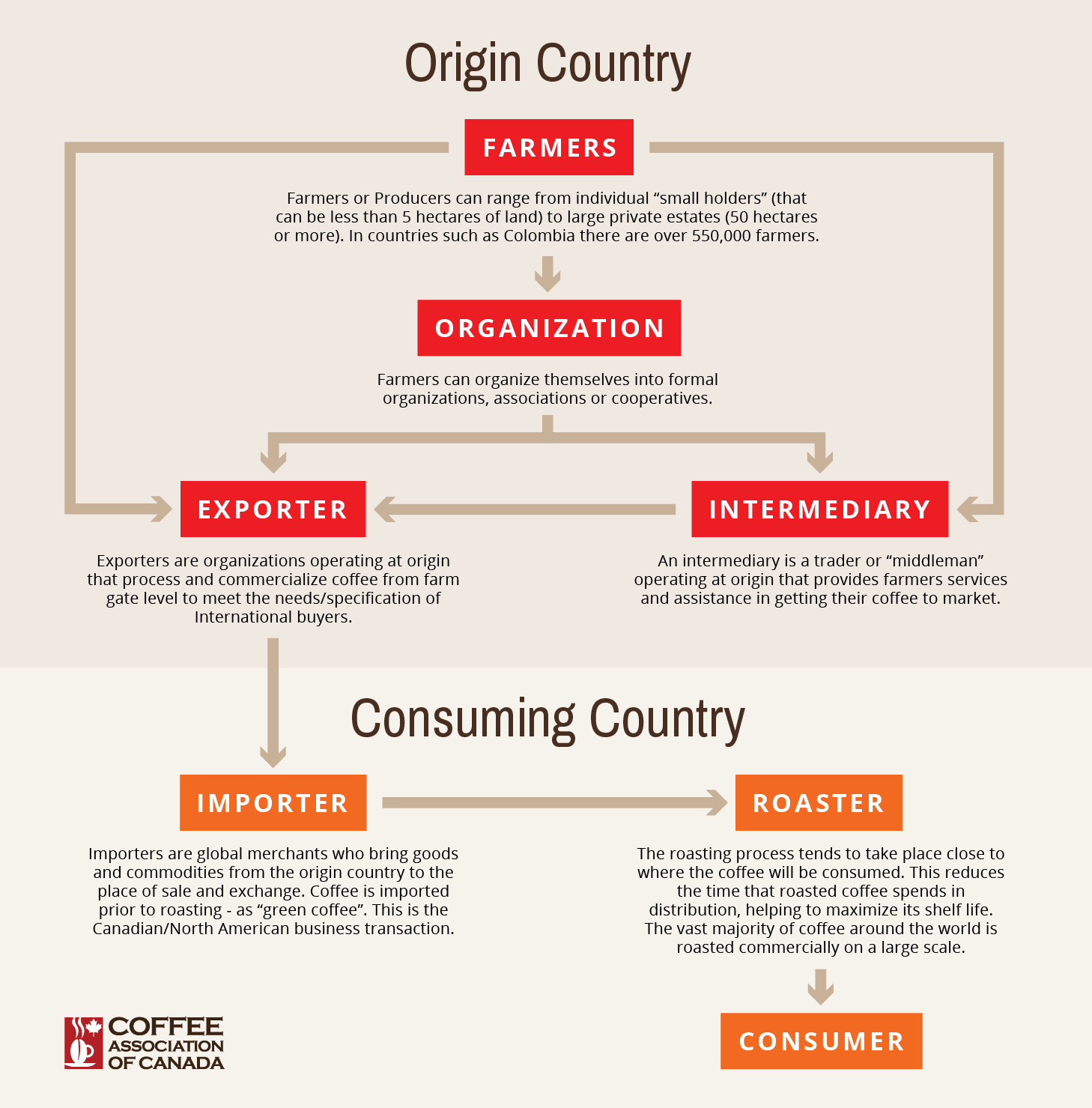Coffee is often traded along multiple points from producers to processors in order to complete the supply chain. In North America and specifically in Canada coffee is imported through specialized US or International based Importers who integrate highly complex supply chains.
Imported coffee must comply with both the Food and Drugs Act and Regulations and the Consumer Packaging and Labelling Act and Regulations. The Government of Canada has a wealth of information about importing available on its websites.
You can directly contact the Canadian Food Inspection Agency (CFIA) who is responsible for the enforcement of these acts.
Be aware of the new Safe Food for Canadians Regulations that came into effect January 15, 2019 to improve oversight of imported food products, including but possibly not limited to coffee, which would require importers to have a licence.
The Government of Canada has a wealth of information about importing available on its websites.
For general import business set up requirements.
For guides and checklists, go to the Canadian Border Services Agency.
